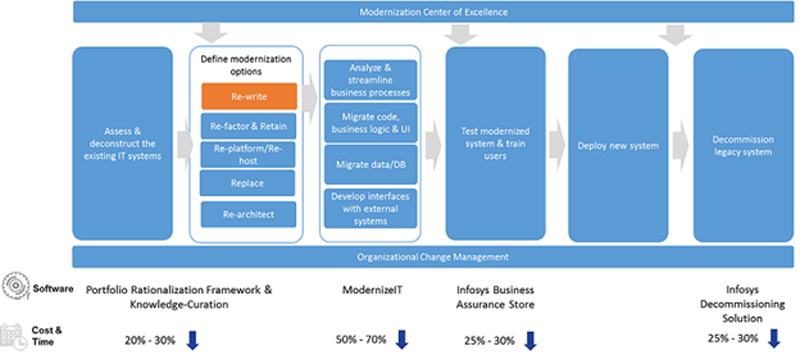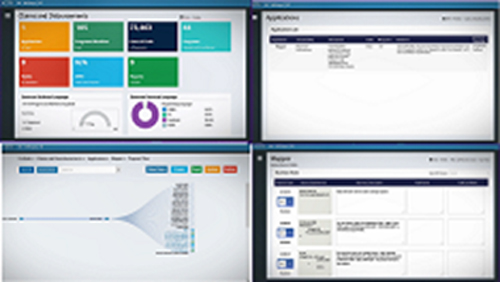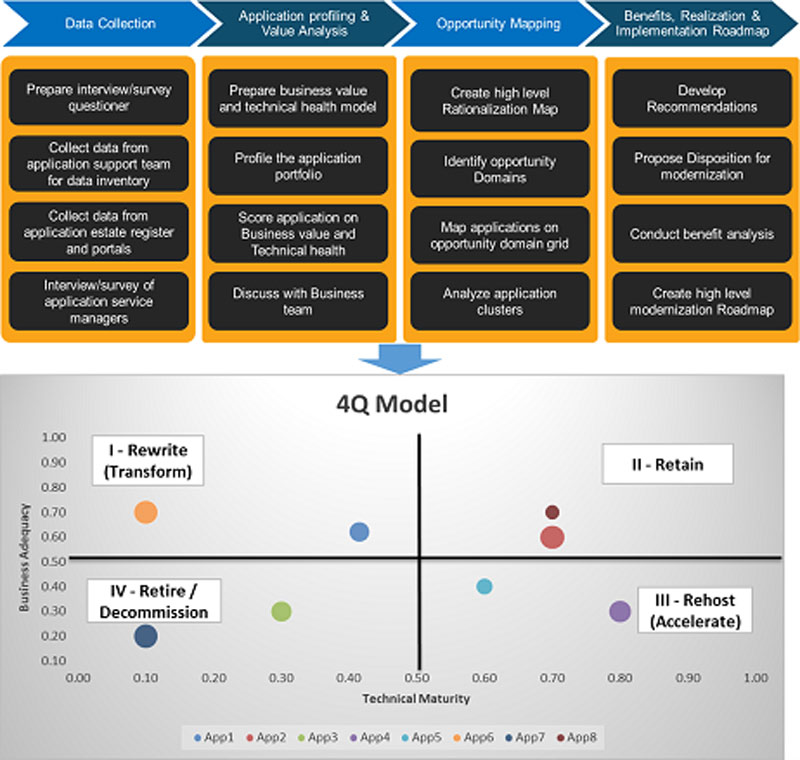-
-
Like what you see?
LetsTalkUrl
Let's Talk
In part 1 of this series, I discussed the key characteristics of modern IT systems and the various approaches for building such systems – Re-host, Re-write/Reengineer, Replace, Retain.
In this blog, I’ll discuss how can an agency understand its legacy system better, and how should it choose the right ‘R’ to modernize it.
An agency may have to execute one or all of the Rs to transition to a modern IT system. And, this happens across the following six phases:
Agencies can execute all these phases faster and at a lower cost and risk by leveraging automation. The figure below illustrates the major components of this approach and the potential savings that could be realized.

Figure 1: Accelerating Modernization with People + Software
Agencies should have a clear understanding of what their future landscape looks like, what should be the baseline architecture of their IT systems, and the technologies they intend to use. This understanding will help them identify appropriate modernization option for an application.
An agency should analyze its existing applications against a set of questions & criteria, some of which may include:
Once this analysis is done, an agency will have an understanding of the gaps between the current and the to-be landscape. Based on this, an agency can define which applications should be modernized, how should they be modernized and when should they be modernized.
Agencies can accelerate execution of this step through tools like:
Knowledge-curation tools that help an agency quickly and accurately understand how a system works. Such tools analyze the entire system portfolio; extract and store operational, workload, interface and code data; and present this data in a meaningful way (e.g. what-if analyses, correlation models between code and issues/logs, critical business paths etc.)

Figure 2: Sample output from a knowledge-curation tool
Portfolio rationalization tools help an agency analyze the entire portfolio based on multiple criteria in a matter of hours, and enable the agency to prioritize applications for modernization.

Figure 3: IT Systems Rationalization Framework
Read part 3 to learn Planning, executing & testing a modernization program
You can also contact us to learn more about our comprehensive suite of legacy modernization services and solutions that is helping public sector organizations successfully navigate their modernization programs.

Sandesh has been managing large Federal and State Clients. He has managed to work and lead the client on large engagements around 1) Legacy Modernization 2) Cloud Enablement and Migration 3) Blockchain 4) Salesforce based Contact tracing and Vaccination passport 5) Robotic process automation to enable process refinement 6)Organization based Agile enablement and adoption He has been instrumental in growing business relationships with current clients and assist in bringing new clients on board.